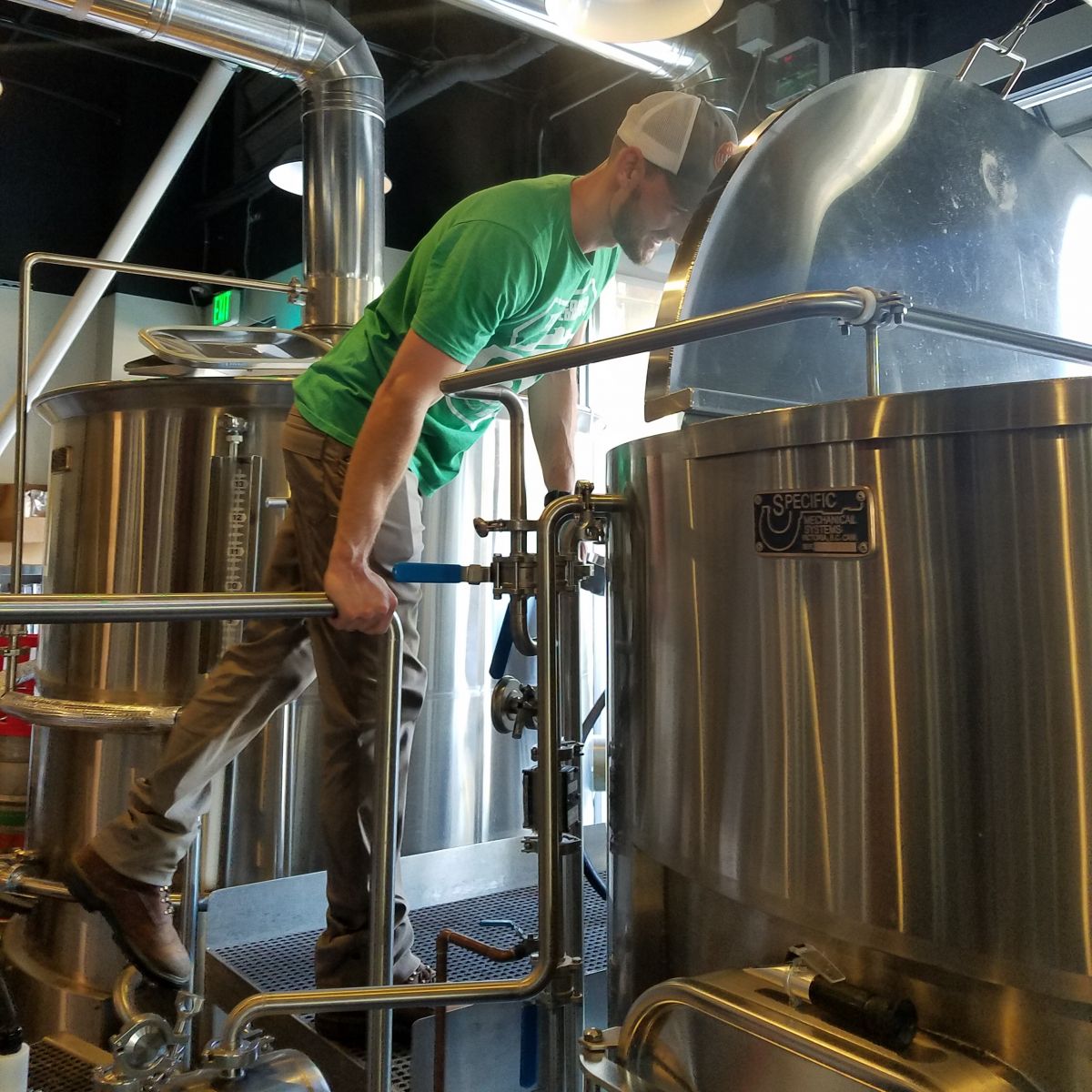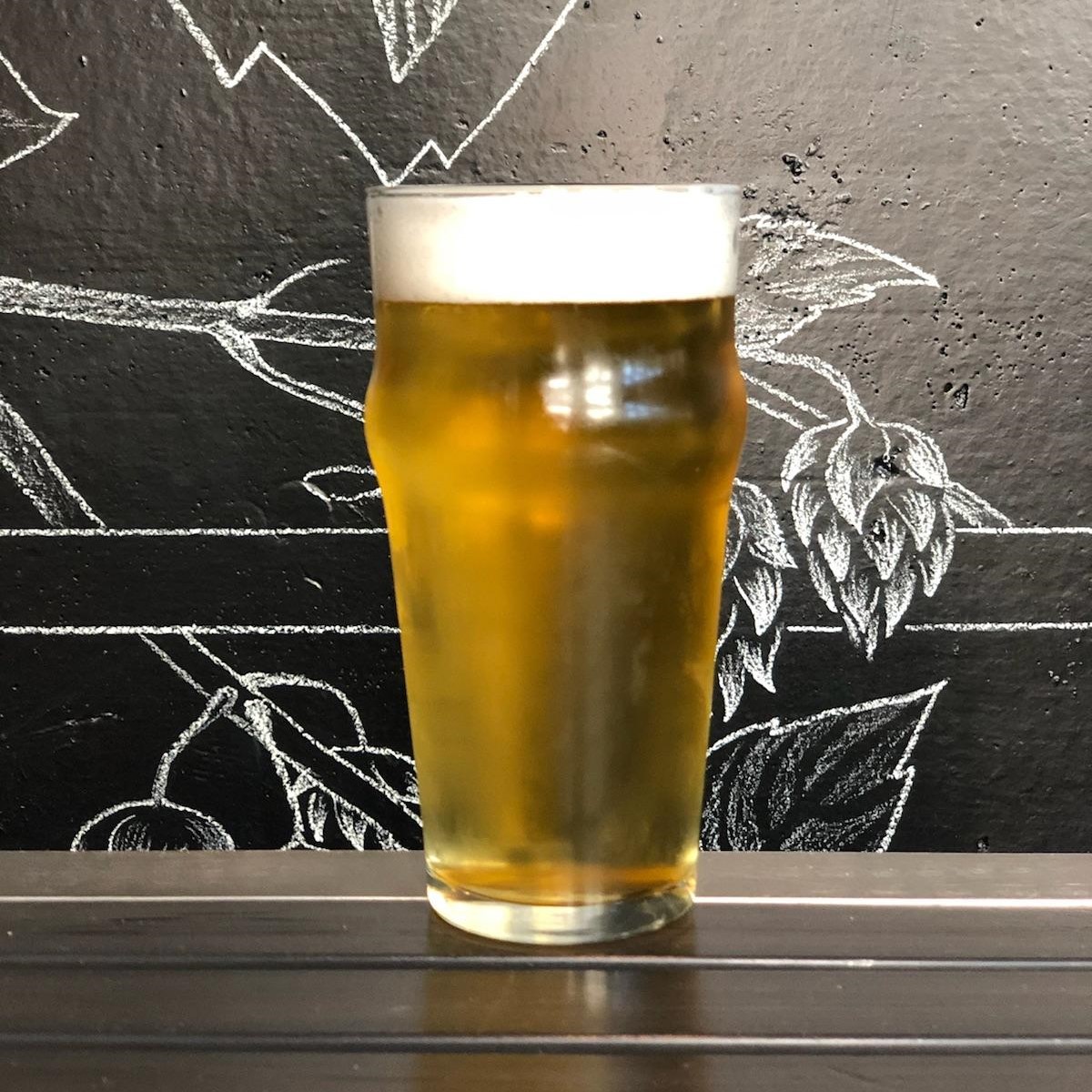My journey started during a conversation with several fellow BJCP judges. We had been discussing the rising popularity of New England Style Hazy IPAs (NEIPAs), and whether or not this would ever become an accepted style in brewing competitions across the country. During this discussion, one judge mentioned another new style that a brewery in San Francisco had just come up with. It was called a Brut IPA, due to its ultra-dry character and very low finishing gravity. Being a fan of the classic, hop-forward, dry west coast IPA style, I was very intrigued. Not to mention having been born in San Francisco myself, it tapped into my regional pride. Unfortunately, my first taste of a Brut IPA was not Social Kitchen And Brewery’s revolutionary offering but was from another local Bay Area brewery inspired by Kim Sturdavant’s creation. It was full of the buttery, off-flavor diacetyl, and it literally left a bad taste in my mouth. In order to get a more accurate idea of what all the buzz was about, I eventually made my way to Social Kitchen And Brewery and tasted this new style from the source. It was even better than I had imagined it would be. It was super dry and effervescent, with amazing hop aroma. It seemed to quench my thirst on one hand, and leave my mouth dry and wanting another sip all at once. With huge notes of stone fruit and tropical, juicy aromas, this style felt like the perfect canvas to showcase all of the amazing new school hops that I’ve come to know and love. I was finally a believer, and I knew I had to brew one for myself.
I wasn’t the only one bit by the Brut IPA bug. A fellow club member was interested in taking a shot at this new style with me. At the time, there was not a lot of information on brewing these Bruts, so we set out to create our own recipe. Luckily, we had recently brewed together at the legendary Sierra Nevada Brewery on their R&D system for a homebrew club experiment. The focus of this experiment was mash temperature and the effects that different temperatures have on alpha and beta amylase. During that experimental brew day, we had learned about a commercially available enzyme, which had an alpha amylase enzyme in it. Naturally, we thought this was what brewers were using to get their Brut IPA’s to finish at 1.000 gravity, one of the style’s most notable characteristics. We worked together on a recipe, picked up the ingredients and this magical “amylase enzyme,” and were ready to give this style a shot.
Our approach to the recipe was similar to a NEIPA with regards to hop schedule -- low bitterness with a majority of the BU’s coming from late additions. The grist was very simple, a majority of high quality 2-row base malt, some white wheat, and a little carapils. The documentation for this particular amylase enzyme said it could be used in the mash, or in the wort when pitching your yeast. Since we planned on splitting the batch, we had the opportunity to experiment. The amylase enzyme was added initially in the mash, and then we added more to one half of the split batch when pitching our yeast. Interestingly, the batch with the enzyme pitched in both the hot and cold side finished lower, with a gravity of 1.004, while the one with the enzyme used only in the mash finished with a gravity of 1.007. Both beers tasted great, but we still felt there was more work to be done, as we didn’t hit that 1.000 final gravity that we were aiming for.
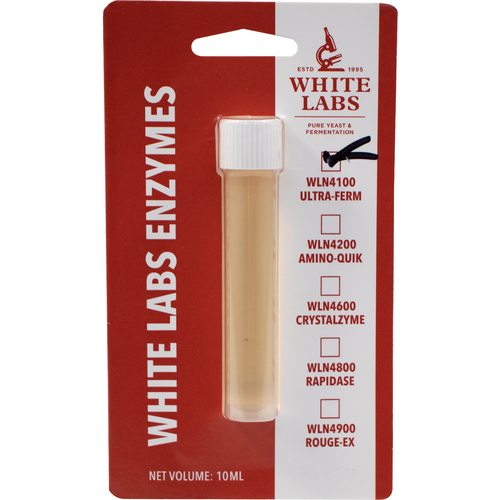
By this time, Brut IPA mania was catching on, and more information was finally starting to surface with different brewing strategies. We learned that Social Kitchen and others weren't using Alpha Amylase, but rather, a different enzyme, one that was even harder to pronounce, called Amyloglucosidase (AMG). This particular enzyme comes from a fungus (Aspergillus niger), which can be found on certain fruits and vegetables. The key difference is how AMG can hydrolyse (breakdown) sequentially both a-1,4 and a-1,6 glycosidic bonds. We were able to get got our hands on some AMG and had set our sights set on another Brut IPA brew day.
Having been pretty satisfied with how our first batch turned out, we chose to keep the recipe the same, only swapping out the enzymes. The documentation for the AMG enzyme we were using stated it could be pitched during the mash or during fermentation, and since we had heard of brewers having success with pitching it during fermentation, we opted to go that route. We ended up adding the enzyme when we added our first dry hops right before primary fermentation was complete. Our thought process was that the enzyme would break down the large, complex, insoluble starch molecules into smaller ones, and allow the fermentation to go longer, thus allowing us to get some biotransformation with our dry hop addition. We were right: the beer finished at 1.000 gravity and tasted amazing! We brought some to our homebrew club and got stellar reviews about it’s taste and aroma. A week or so later, we ended up bringing this beer to a festival to pour for the public, and that’s when everything went south on us. The beer reeked of diacetyl, and we had to pull it from our lineup.
Not long after, having licked my wounds from the festival, I found myself back on the path to conquer Mt. Brutus (a pun that will make sense later on). For the next batch, I ended up only adding the AMG enzyme in the mash, and steered clear of adding any during fermentation. This batch ended up at 1.003 final gravity, but tasted and smelled amazing for the entire life of the beer. My suspicion at the time was that adding the enzyme late or at the end of fermentation does not allow the yeast to clean up the VDKs (vicinal diketones), because the extended and/or restarted fermentation has left the yeast stressed, making an environment that is no longer ideal.
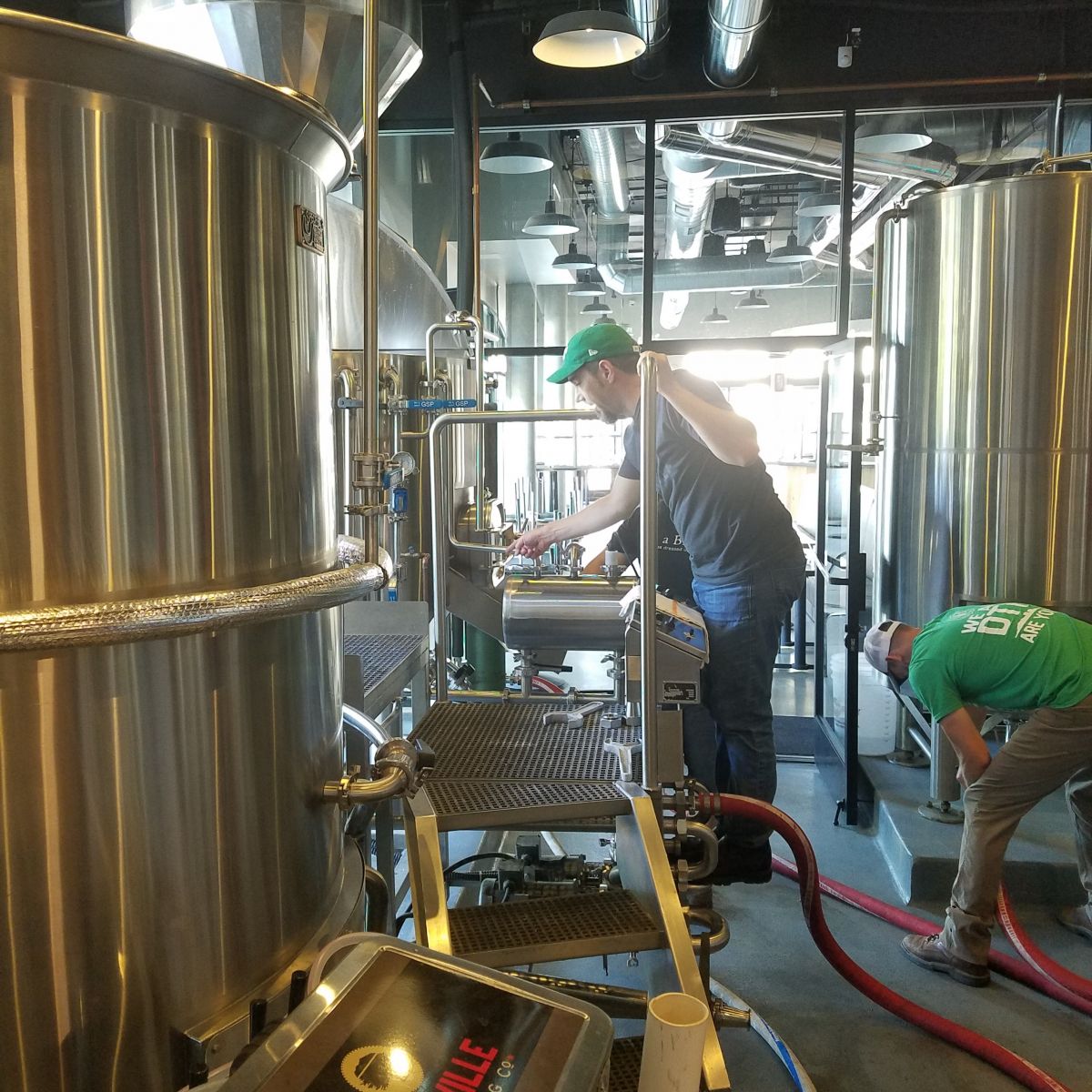
At this point, the Brut IPA craze was in full swing, and we began discussing making a kit here at MoreBeer!. Right from the start, we knew there were a few challenges that’d we need to address. First, we had to bring in the crucial AMG enzyme, something we had never previously carried. Second, all of our kits are made to offer both an extract and an all-grain version, and it wasn’t yet clear how best to use the AMG in an extract brew. My previous experience with the enzyme had me wary of using it during fermentation, so we had a lot of experimenting to do on the extract side. Luckily for us, our good friends at White Labs started packaging a diluted form of the AMG enzyme in 10ml vials for use on a homebrew scale. Since the single-use vial is sized for 5-gallon batches, “Ultra Ferm” (AD364) was the clear choice to be included with with our upcoming Brut IPA kit. With our enzyme in hand, we were ready to start testing how best to use it in the extract brewing process.
Some quick notes on the enzyme itself: It can be used in the mash, the wort pre-boil, or in fermentation. According to its documentation, Ultra Ferm works optimally at a temperature range of 131–144 °F (55–62 °C) and a pH range of 5.4–5.6. I really wanted to keep the usage of this enzyme on the hot side, which would allow it to denature during the boil. With that in mind, our first extract experiment was to try and work with it in the wort pre-boil. One issue with this approach in an extract batch is that you typically don’t add LME or DME until your water is well above the temperature at which the enzyme would denature. So for our first experiment, we added our steeping grains and heated our water to about 146 °F. Then, we added the several pounds of malt extract, thus lowering the liquid temperature to an acceptable range for the enzyme. Next, we added our AMG enzyme and allowed the solution to rest for a half hour, then removed the steeping grains and brought the wort to a boil. From that point on, it was just like a normal brew day. This batch, similar to my very first Brut attempt, came out great, but ended up even shorter than our target, finishing at 1.010.
For our next extract experiment, we added the AMG enzyme at the same time we pitched the yeast, and the batch ended up finishing at the elusive 1.000 FG I had originally hoped for. It also tasted and smelled great for the entire life of the beer, and we had it on tap for several weeks. This seemed to support my earlier suspicion of how important it is to give the yeast ample time and an ideal environment to clean up VDKs.
During all this experimentation we had been posting pictures to all of the MoreBeer! social media channels. This caught the attention of our friends at BYO Magazine (Brew Your Own Magazine -
Subscribe here!), and they asked if I was interested in contributing to a Brut IPA article. I was honored to share what I had learned during my journey toward Brut IPA’dom. This afforded me the opportunity to reach to some local professional brewers, and interview them about their Brut IPAs. My first stop was a no brainer -- I had to talk with the man who invented the style, Kim Sturdavant of Social Kitchen And Brewery in San Francisco. Like most brewers I have met, he was totally open to sitting down and sharing information. We met at Social Kitchen and enjoyed a glass of “Puttin On the Spritz,” as I asked him several questions.
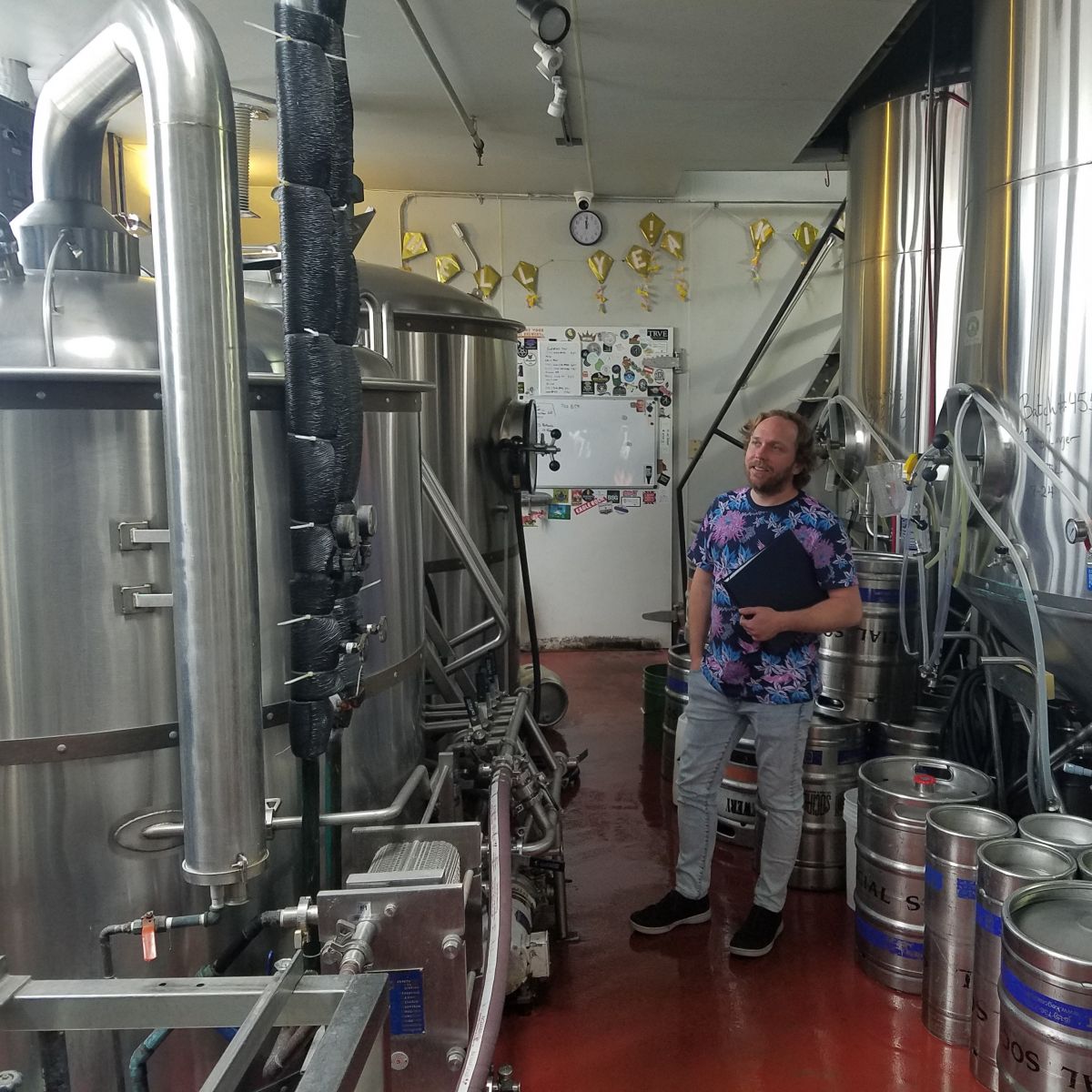
He told me he first starting using the AMG enzyme on his Triple IPAs as a strategy to dry them out without using dextrose. He had first learned about the enzyme from the legendary San
Francisco Brewery, Cellarmaker. Sturdavant had been kicking around the idea of using the AMG enzyme in a standard IPA to try and make a sparkling wine-inspired hybrid IPA. After a year or so he finally got the chance to brew it, and well, we know the rest: it became a national sensation. Speaking about what characterizes the style, Sturdavant says, “it should be as
dry as possible, very light-colored, and lots of hop flavor and aroma. No caramel or other grain flavor should be present.” He feels pilsner malt and adjuncts like flaked rice or corn are key for the grist, and the hops should be big, tropical and resinous, and of course, the Amyloglucosidase enzyme and a good yeast nutrient as well.
Our conversation eventually progressed to the lessons he’s learned having now brewed several Brut IPA’s. He too was cautious of working with the enzyme in fermentation due to how the enzyme interacts with hop oils, as well as the issue of diacetyl or VDKs that could occur if added later in fermentation. He mentioned that he found Brut IPAs suffer from bad head retention, and shared a great trick to help with that: “adding a small amount of dried malt extract (DME) in the boil after the enzyme has been denatured.” This adds back a small amount of Dextrins, giving the beer body, and aiding in head retention. We finished with discussing what he believes the future holds for the Brut IPA style. He didn’t think it would reach the level of status that NEIPA has achieved, but he is starting to think it might become a recognized BJCP style. Outside of Brut IPA’s, he encourages people to use the enzyme in other styles, as it could result in some “very interesting beers.”
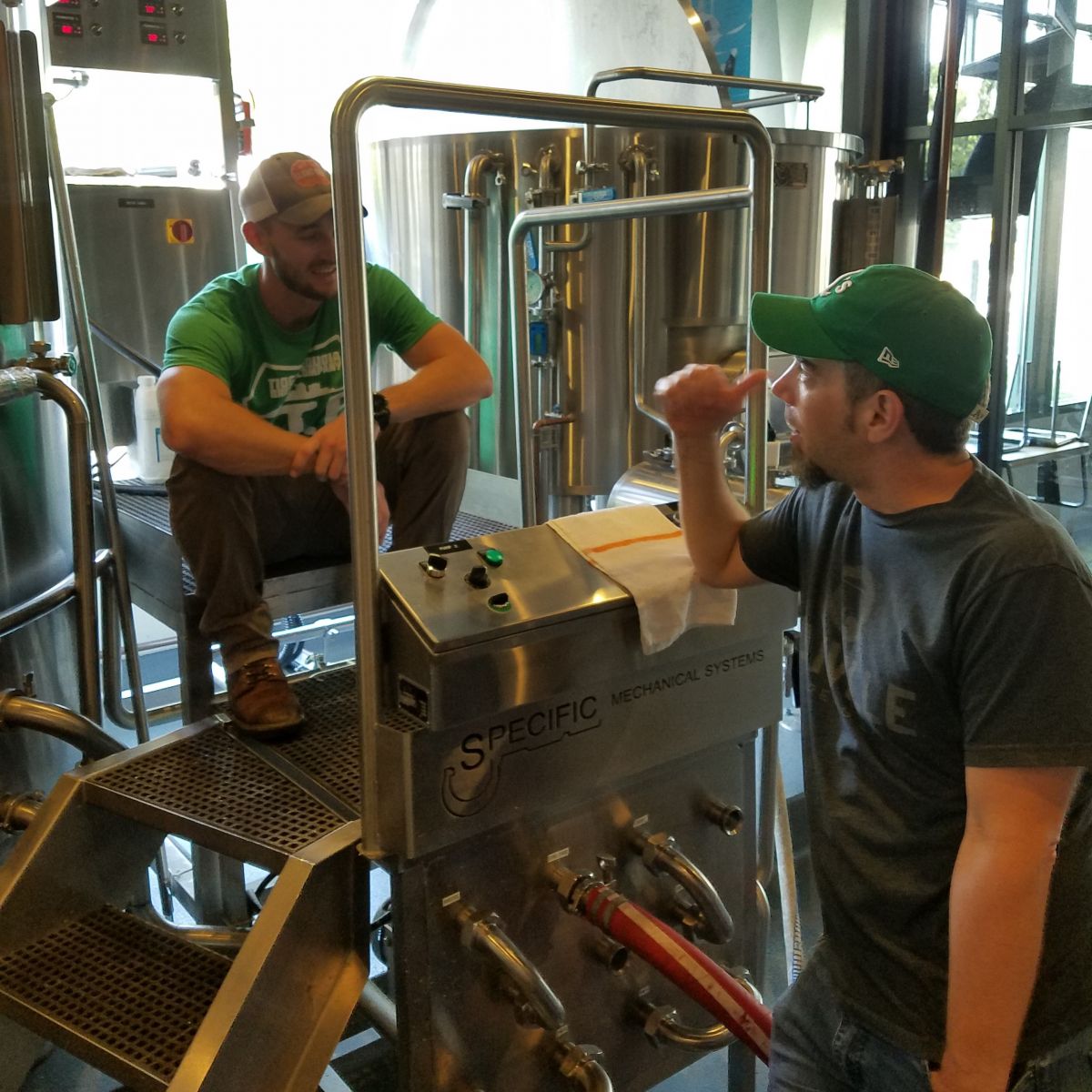
My next stop brought me into the East Bay, about 45 minutes outside of San Francisco to the city of Danville. Home of Danville Brewing Company and a close friend of mine, head brewer Matt Sager. I was able to hang out as they brewed Brutus, their very first Brut IPA. His recipe, much like Kim’s, featured Pilsner malt, some flaked corn and something a little different -- flaked oats. For hops, he went with Citra, Mosaic and Idaho 7. As for the AMG enzyme, having heard about the issues it could cause when used in fermentation, Matt opted to add it during the mash. The beer ended up pouring at their booth at GABF (Great American Beer Festival) and turned out amazing, and I found myself making my way back to the DBC’s booth a few times for another pour.
Having spoken with two breweries, it was time for the hat trick, so I reached out to BareBottle in San Francisco. They have been making some amazing beers that are always outside the box. The most recent Mt. Brutus (remember the pun from earlier?) is a Hazy Brut IPA, making it the perfect icing on the cake to my Brut IPA brewery journey. I sat down with owner Lester Koga to chat about the style, and the process of brewing a Brut IPA. His opinion is that a Brut IPA takes from the classic west coast IPA, both incredibly dry and clean characteristics, which create the perfect palette to showcase all of the modern, really coveted hops like Citra, El Dorado, Galaxy, Mosaic, etc... The other brewers I had talked with had been using California Ale yeast (
buy it now!), but BareBottle opted to go with Vermont yeast (
get it here!). Lester explained, “we at BareBottle bastardize as many things as we can. I know most people would not think about making a hazy brut IPA. But for us, that was taking who we are and adapting this Brut IPA philosophy and putting our spin own it.” When I spoke with Lester, they were on their third Brut IPA, and had been experimenting with the enzyme only during fermentation. He stressed the importance of managing diacetyl. On their first brew, they added the enzyme when the beer was at terminal gravity, on the second batch, they added it about 8 days into fermentation, and for their most recent batch, they added it on day 4. It sounded like they had similar experience to what I had with my homebrews, concluding that, if you are going to add the enzyme on the cold side, ideally, do it as soon as possible.
Having now made my way to Mt. Brutus and back, like all journeys eventually do, mine was coming to an end. I sent my content off to BYO, I put penned this article, now what? That’s when it hit me: this is what brewing is about! Similar to life itself, it’s all about learning, applying, and building upon past experiences. It’s not the destination that matters, it’s the journey, and it should never end! Kim Sturdavant encouraged using the AMG enzyme in other styles, to try to create something completely new. How can I apply what I have learned, to make something new, and hopefully better? To echo Kim’s sentiment, I encourage all of us to experiment. Who knows, it might lead to a new beer style. No matter what the case, enjoy your journey and learn from your travels...
All contents copyright 2024 by MoreFlavor Inc. All rights reserved. No part of this document or the related files may be reproduced or transmitted in any form, by any means (electronic, photocopying, recording, or otherwise) without the prior written permission of the publisher.
.jpg)
